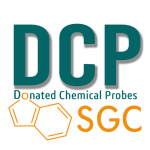BAY-985
Inhibitor of TBK1, IKBKE
Structure
In Cells
In Model Organisms
Probe BAY-985 is in the process of SERP review.
Please continue to check back for new reviews and commentary.
SERP ratings and comments
SERP Ratings
(last updated: 2 Jun 2020 )
SERP Ratings
SERP Comments:
Take the usual care with kinase inhibitors. IC50 for TBK1 (STK family) of 2nM/30nM for ATP low [10uM]/high [1mM], 2nM for IKKE (=IKBKE, an STK), <<100 nM for YSK-4 (STE family), 123nM FLT3 (a RTK). So pretty good but you couldn’t rule out a YSK-4 effect in cells/in vivo if dose excessive. Cell-based activity (measuring pIRF3) is IC50 74 nM which is good. It is not clear what the appropriate cell or in vivo on-target response is. Oral availability is low (11%, rats) due to high clearance. Nevertheless, it is stated that “Following administration of a single oral dose of 34 at 100 mg/kg to female NMRI nude mice, the exposure was low to moderate, without hints of accumulation after repeated q.d. (once daily) administration. Biochemical IC50 (TBK1) and cell-based IC50 (TBK1/IKKε) were covered by plasma exposure for 10 and 11 h, respectively. However, proliferative IC50 (SK-MEL-2) was ca. threefold higher than Cmax. Oral dosing at 100-200mkg may be appropriate.
(last updated: 8 Dec 2020 )
